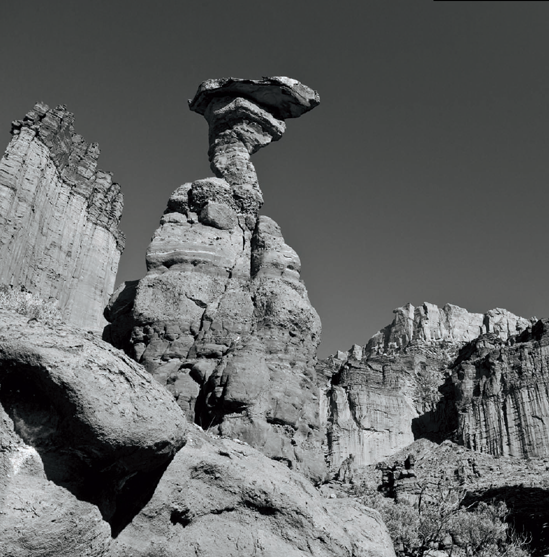Chapter 4. WORKING WITH LIGHT

Metering and Exposure for Black and White
Zone System Basics
Learning Your Metering Systems
Light Direction
Light Quality
Looking for Landscape Lighting
Great Light for People and Portraits
Dealing with Tones at Twilight
Black and White after Dark
The information I have covered on f-stops and ISOs, and how the camera operates, is relatively straightforward: Adjust this, the result is that. Working with the light in front of the camera is different. It takes practice and vision to see what the light in front of the camera is doing and how the sensor will record it. Knowing how the camera operates enables you to take advantage of that light.
Every scene has different lighting, whether it's photos of a family or a mountain range. Sometimes you can adjust the light, but other times, you simply need to make the most of what is there.
Without color to define certain subjects, the light within the scene can have the most influence in how an image looks. The interplay of light and shadow will determine the success of your black-and-white images. Learning to see light quality, and its inherent contrast and direction, is also a large factor in the difference between creating a great black-and-white image and taking a snapshot.
METERING AND EXPOSURE FOR BLACK AND WHITE
There are many different schools of thought about metering and exposure. There are those who are adamant that ...
Get Black and White Digital Photography Photo Workshop now with the O’Reilly learning platform.
O’Reilly members experience books, live events, courses curated by job role, and more from O’Reilly and nearly 200 top publishers.

